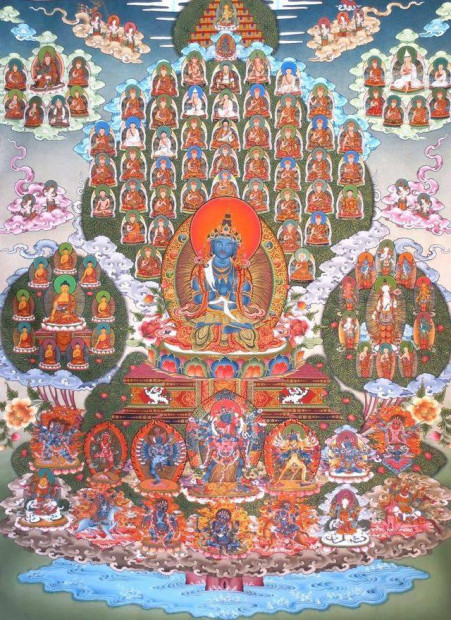
In Tibetan Buddhism, we always talk about samayas. It is very important for us to understand the true meaning of samay. The practice of Vajrayana depends entirely on the maintenance of samaya.
Without samaya, even if we practice mahamudra, dzogchen, or recite millions of mantras, all this will be meaningless, and we will achieve nothing.
We can study Vajrayana for many years and accumulate great knowledge. But if we violate the samayas, or we don’t have them, it’s like a drop of water dissolved in the ocean – absolutely meaningless.
Nowadays, many practices are available to us, such as Dzambala, Vajravarahi, Chakrasamvara. Guru Rinpoche, and many other yidams to choose from.
Many people say, “I like Green Tara, I like Mahakala, I prefer this or that yidam,” and compare different yidams. However, if we do not understand guru yoga, even its simplest form, then everything is meaningless.
When we talk about guru yoga, it may seem like a simple question to us, especially when we mention this topic to the most experienced practitioners. They say that guru yoga is the main practice, and they have many years of experience in it. And that’s why they no longer need, they say, to practice guru-yo. They only want to practice Kalachakra, Vajravarahi yab-yum, Chakrasamvara, and so on.
But if we do not understand guru yoga, no matter what the highest practices we do, all this will not make any sense. It’s like a drop of water dissolving in the ocean.
All practices, all yidams, come from one Guru.
Ga Lhakang Rinpoche 13th, holder of the Drugpa Kagyu tradition
